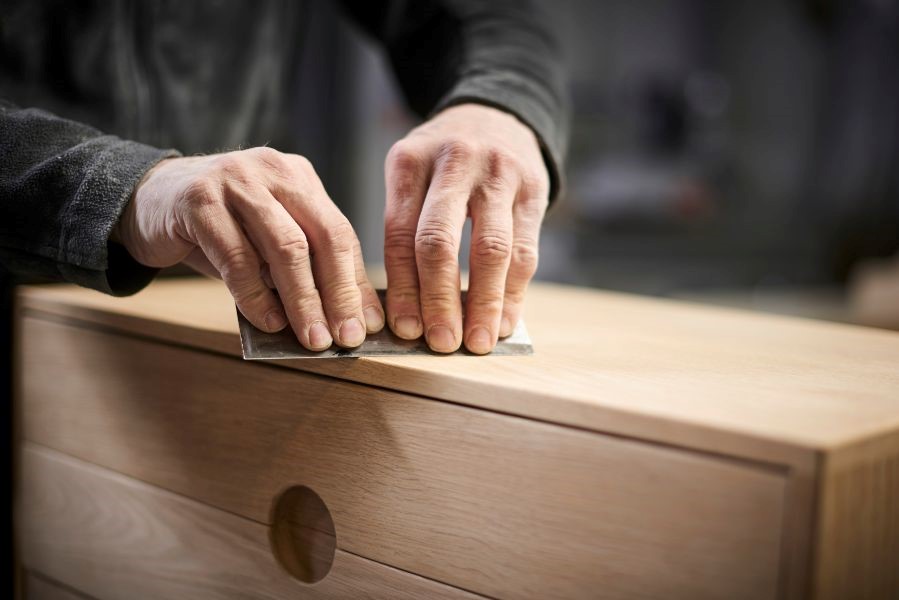
For thousands of years, dedicated artisans have applied manual skills and creativity to produce stunning works of functional art. Handcrafted furniture represents a convergence of design, material selection, joinery, and decorative details that elevates simple components into lasting heirlooms. Tracing the evolution of furniture making through history reveals ingenious techniques, artistic movements, and advances in materials that influence furniture construction even today.
Early History
Furniture construction dates back over 5,000 years to ancient civilizations like Egypt, Greece, and Rome. Early Egyptian stools and chairs featured a simple post and rail construction trimmed with ornamental turnings. Greek and Roman furniture advanced with elegant klinai beds and curule seats with turned legs and stretchers. Hand tools like mallets, chisels, handsaws, and adzes crafted and connected the wooden components. Early joinery involved fitted but un-reinforced connections. Decorative elements came from paint, carving, or inlays like ivory.
Medieval Era
The medieval period saw massive wooden furniture arise due to improved joinery and carpentry techniques. Iconic Gothic and Romanesque designs used thick timber frames with panels set into grooves. Interlocking joints like mortise and tenon connected the structural components which were secured with pegs instead of nails or screws like the SPAX ones often used today. Chair and bench frames featured turnings, carvings, and ebony or fruitwood inlays for ornamentation. The influential Romanesque style used hearty oak, while later Gothic pieces took advantage of walnut, cherry, and other European woods.
Renaissance Movement
Furniture crafted during the European Renaissance expanded in both scale and sophistication. Italian, French, and Dutch artisans incorporated architectural details like columns and arches while experimenting with exotic veneers, marble, alabaster, and pietra dura stone inlays. Curving shapes and elaborate high relief woodcarvings became prevalent. New joined case pieces like dressers and cupboards appeared thanks to dovetailing and cockbeading joints that created sturdy boxes.
Baroque, Rococo, and Neoclassicism
The Baroque focus on ornamentation influenced 17th and 18th century design. Bold grains like walnut burl came into vogue along with tortoiseshell, gilt, and pewter inlays. C-scrolls, S-curves, and voluted shapes adorned exuberant surfaces. Rococo accelerated the carved, gilded, and painted excess while introducing Oriental lacquer finishes. Innovations included bracket feet, dish tops, tapered legs, and inlays of contrasting woods.
Arts & Crafts Movement
Arts & Crafts originated as a reaction to industrialization, favoring a return to hand craftsmanship and traditional techniques. Quarter sawn white oak was prominently featured for its varied figure. Common elements included wide pegged mortise and tenons, patina finishes, accent hardware, and durable leather upholstery.
Modern Studio Furniture
The modern studio furniture movement took off after WWII, driven by woodworkers exploring furniture as artistic expression. Innovations included sculptural forms, mixed media constructions combining wood with glass, metals and plastics, and impeccable craftsmanship showcasing unique joinery concepts.
Finishes and Materials
Just as construction techniques evolved, so did materials and finishes. Early furniture used native woods like oak, walnut, mahogany, and cherry which were laboriously sawn and hand planed. Exotic imported woods expanded the palette. At first, simple linseed oil and wax protected surfaces. The mid 1800’s saw shellac adopted as a sealant. Later, nitrocellulose lacquer became prevalent for surface clarity and vapor permeability. After WWII, polyurethane varnishes made fiber-popping glossy finishes achievable. Along with solid woods, manmade boards like plywood and MDF enable more complex forms. Modern adhesives like PVA glue create bonds stronger than traditional joints.
Conclusion
The history of furniture reflects the tireless ingenuity of creative artisans over the ages. The early craftsmen established the foundations of joinery, ornamentation, and design vocabulary, all of which still shape furniture today. The next great advancement lies in the hands of artisans yet to be inspired.